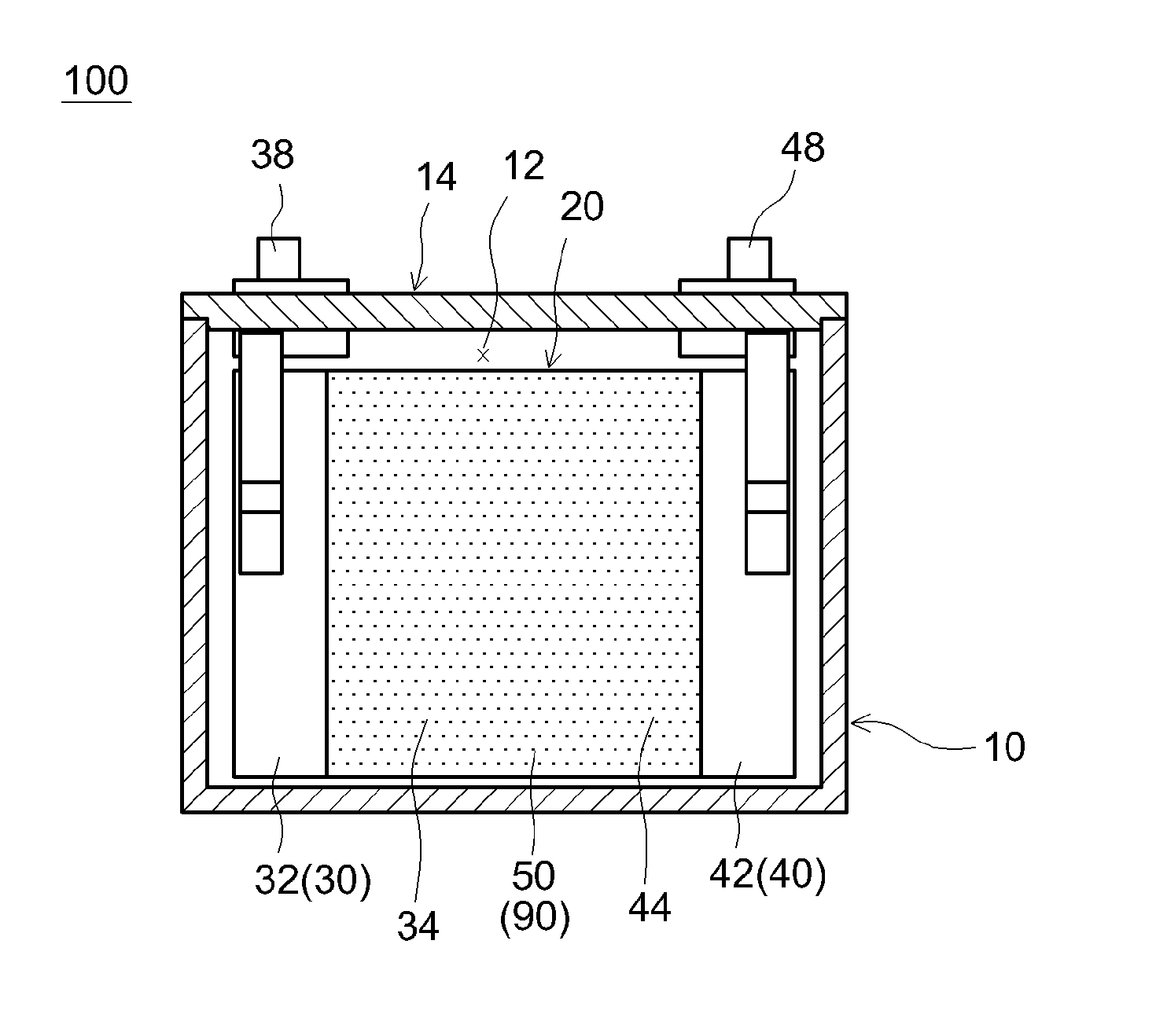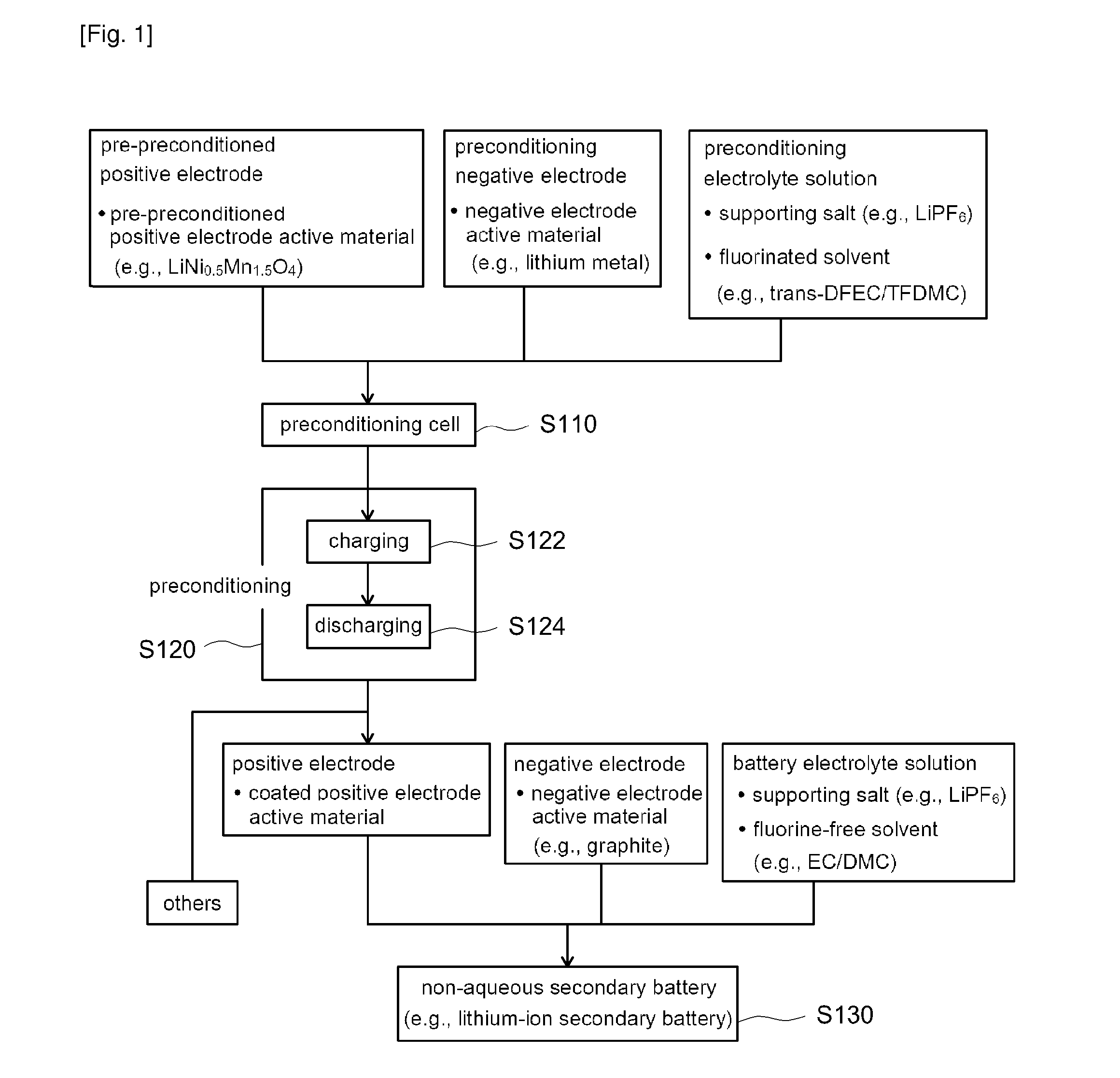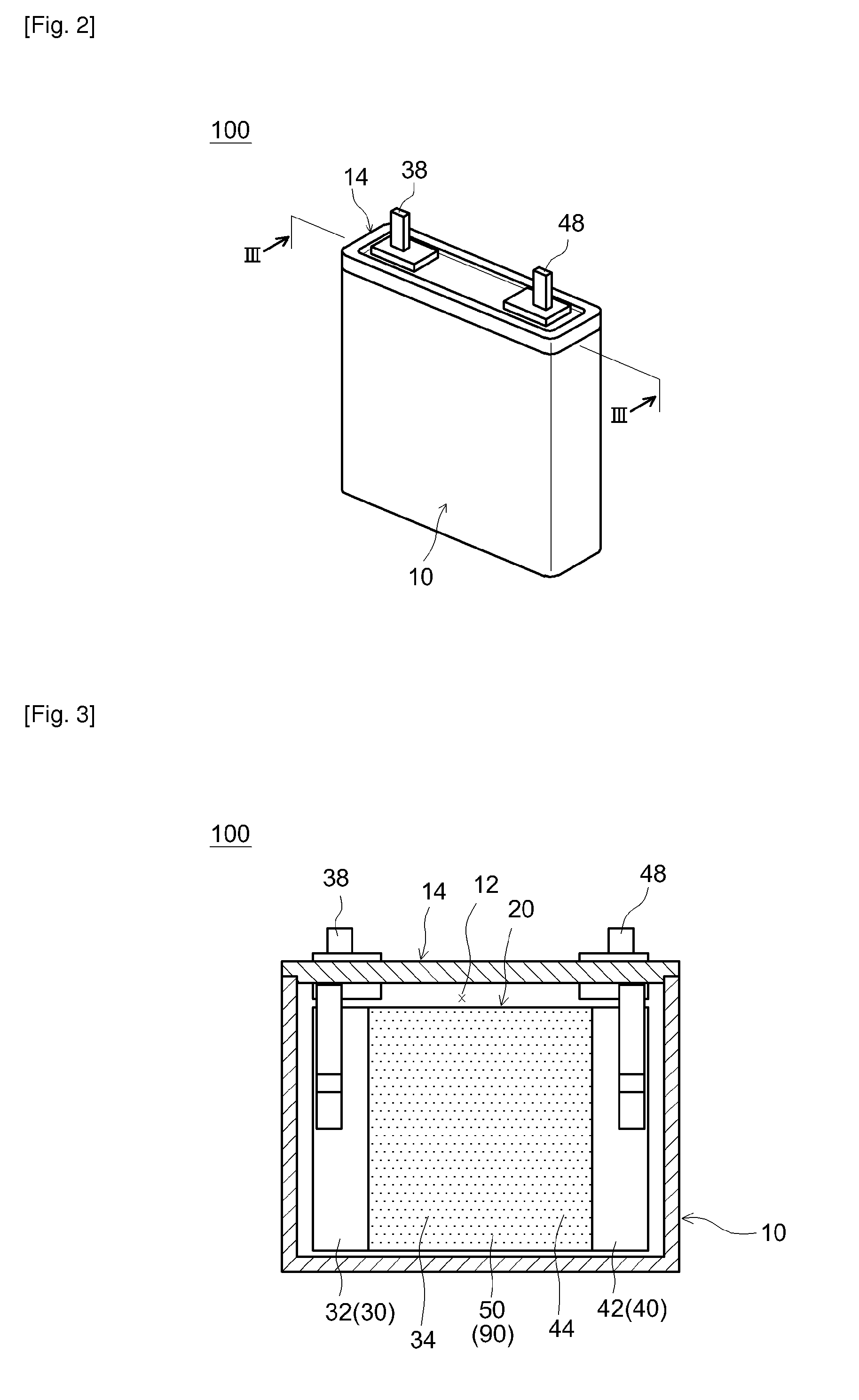Method For Producing A Non-Aqueous Secondary Battery
- Summary
- Abstract
- Description
- Claims
- Application Information
AI Technical Summary
Benefits of technology
Problems solved by technology
Method used
Image
Examples
example 1
Fabrication of Positive Electrode Sheet
[0146]As a positive electrode active material, was obtained LiNi0.5Mn1.5O4 having an average particle diameter D50 of 6 microns and a BET specific surface area of 0.7 m2 / g. This positive electrode active material, acetylene black (conductive material) and PVDF (binder) were dispersed at a mass ratio of 87:10:3 in NMP to prepare a slurry composition. The composition was applied to one face of a long aluminum sheet (positive current collector) of 15 microns thickness and allowed to dry to form a positive electrode active material layer. The current collector with the positive electrode active material layer was pressed by a roller to adjust the density of the positive electrode active material layer to 2.3 g / cm3, whereby a positive electrode sheet having a theoretical capacity (designed capacity) Cp of 60 mAh was obtained.
[0147](Construction of Preconditioning Cell)
[0148]The positive electrode sheet, a separator (PP / PE / PP tri-layer porous sheet) ...
example 2
[0155]The upper potential limit was set at 5.3 V instead of 4.9 V in the preconditioning process in Example 1. Otherwise in the same manner as Example 1, a lithium-ion secondary battery according to the present example was constructed.
example 3
[0156]The electrolyte solution B was used for constructing a preconditioning cell in place of the electrolyte solution A in Example 1. Otherwise in the same manner as Example 1, a lithium-ion secondary battery according to the present example was constructed.
PUM
| Property | Measurement | Unit |
|---|---|---|
| Electric potential / voltage | aaaaa | aaaaa |
Abstract
Description
Claims
Application Information
 Login to View More
Login to View More - R&D
- Intellectual Property
- Life Sciences
- Materials
- Tech Scout
- Unparalleled Data Quality
- Higher Quality Content
- 60% Fewer Hallucinations
Browse by: Latest US Patents, China's latest patents, Technical Efficacy Thesaurus, Application Domain, Technology Topic, Popular Technical Reports.
© 2025 PatSnap. All rights reserved.Legal|Privacy policy|Modern Slavery Act Transparency Statement|Sitemap|About US| Contact US: help@patsnap.com



